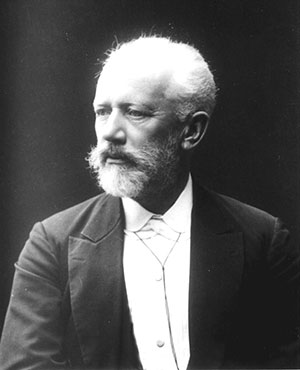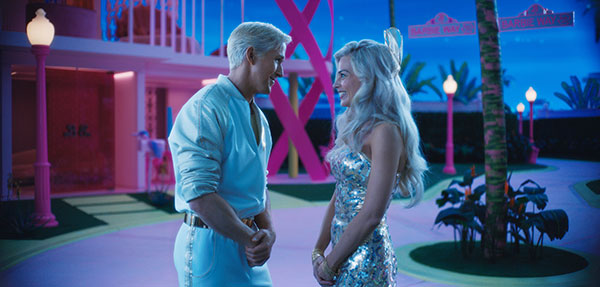 Each summer, orchestras and bands across the United States provide outdoor concerts that are quite popular amid the festivities of Independence Day. Curiously, one of the works featured frequently is the “1812 Overture” by Pyotr Il’yich Tchaikovsky. The bizarre tradition of including this quintessential Russian work on American patriotic concerts stems from the early 1970s in Boston.
Each summer, orchestras and bands across the United States provide outdoor concerts that are quite popular amid the festivities of Independence Day. Curiously, one of the works featured frequently is the “1812 Overture” by Pyotr Il’yich Tchaikovsky. The bizarre tradition of including this quintessential Russian work on American patriotic concerts stems from the early 1970s in Boston.
The overture’s scoring of church bells and cannon fire were believed to complement the subsequent fireworks and increase audience attendance. It has no connection to America’s War of 1812, but rather commemorates Napoleon’s retreat from Moscow.
From a religious perspective, the overture quotes an Orthodox chant. Tchaikovsky, though he had struggles with religion, penned numerous, though lesser known, sacred works, such as the “Liturgy of St. John Chrysostom” (1878) and “Hymn in Honor of Saints Cyril and Methodius” (1885).
In 1880, Tchaikovsky received a commission from Nicolay Rubinstein, director of the Moscow Conservatory. The work was to be connected to the consecration of the Cathedral of Christ the Savior, which was erected to honor the Russian victory over the French army – although it was more of a victory for Mother Nature, as the harsh Moscow winters were the primary cause of the French downfall.
The overture begins with soli for the violas and celli quoting the Orthodox chant “Save us, O Lord” – the low registers coupled with a slow tempo especially enhance the gravity of the opening. As the piece moves along, it assumes a more militant sound through the scoring for tambour militaire (snare drum) before “La
Marseillaise,” the French national anthem, appears to represent the French invasion. At the risk of being churlish, it’s worth noting that the anthem had been banned by Napoleon and reinstated only in 1815 and, thus, Tchaikovsky’s use of the tune is not historically accurate. A similar factual inconvenience arises at the end of the work, where the Russian national anthem “God Save the Tsar” is heard amid the blasting cannons. This anthem was composed in 1833 – two decades after the events of 1812.
Despite the facts that the “1812 Overture” has nothing to do with the U.S. and that the national anthems incorporated were not in use (or in existence) at the time the work is meant to be set, it remains one of Tchaikovsky’s most beloved works. Part of the appeal is the use of cannons, certainly a rarity in the symphonic … canon.
Tchaikovsky did not think much of this work, and most music critics agree with his assessment. However, he did conduct it himself several times.
His most beloved compositions, “Nutcracker” and the “1812 Overture,” are not actually representative of his compositional style, which is often quite serious and brimming with great emotion. A more accurate reflection of his symphonic style is his final symphony, nicknamed the “Pathetique,” which premiered only days before the composer fell ill. He eventually died under circumstances that remain unclear and are likely never to be known.
— Christina Reitz, Ph.D., Special to the Catholic News Herald
Listen online
Listen to a performance of the “1812 Overture”
 NEW YORK — Life in plastic may be fantastic but the tedious ideology-driven comedy "Barbie" (Warner Bros.) is not. Although genuinely objectionable elements are relatively few, moreover, this is distinctly not a movie for the age group to which the figurine of the title is primarily marketed.
NEW YORK — Life in plastic may be fantastic but the tedious ideology-driven comedy "Barbie" (Warner Bros.) is not. Although genuinely objectionable elements are relatively few, moreover, this is distinctly not a movie for the age group to which the figurine of the title is primarily marketed.
Margot Robbie plays the famous Mattel doll that first arrived on store shelves back in 1959. Together with her sidekick Ken (Ryan Gosling), Barbie inhabits a pink-hued feminist paradise where the president, the nine justices of the Supreme Court and all Nobel Prize winners are women.
Troubled and bewildered by hitherto alien thoughts of death as well as by a sudden physical imperfection -- a patch of cellulite on her leg -- our heroine consults one of her many alter egos, Weird Barbie (Kate McKinnon). The problem, it seems, is that whoever is currently playing with Standard Barbie is sad and her sorrow is affecting her toy.
So it's time to journey to the real world to meet the cause of the difficulty and, presumably, cheer her up sufficiently to restore the status quo. Ken stows away in the back seat of Barbie's car and thus gets to share in the adventure.
Arriving in Los Angeles, Barbie discovers the tribulations -- and Ken the joys -- of patriarchy. Barbie also learns to her surprise that, far from being revered as a symbol of female empowerment, she's reviled as the embodiment of women's subjugation.
Ken manages to return to Barbie Land first and proceeds to imbue it with male dominance. Thus, by the time Barbie gets back to her natural setting, it's not only been tainted by warped values but turned topsy-turvy.
Barbie will need the cooperation of all her many eponymous iterations to avert cultural and political disaster. Fortunately, she'll also have the help of Gloria (America Ferrera) and Sasha (Ariana Greenblatt), a mother-and-daughter duo from the realm of human beings.
As scripted by director Greta Gerwig and Noah Baumbach, the picture bemoans the plight of women while blithely stereotyping men as selfish, childish and aggressive. With the rivalry of the sexes raging, little of the humor (Will Ferrell plays the dizzy CEO of Mattel) and less of the sentiment (Rhea Perlman plays the wise granny who co-founded the company) works.
Despite all the controversy that continues to swirl around her, Barbie has undeniably proved a long-lasting source of enjoyment for youngsters. Her namesake movie, by contrast, is too closely focused on its own agenda to provide older viewers with much entertainment and too freewheeling to be acceptable for little kids.
The film contains stylized physical violence, a few instances each of mild swearing and crass talk, mature wordplay and brief sexual and anatomical humor. The OSV News classification is A-II – adults and adolescents. The Motion Picture Association rating is PG-13 – parents strongly cautioned. Some material may be inappropriate for children under 13.
— John Mulderig, OSV News. John Mulderig is media reviewer for OSV News. Follow him on Twitter @JohnMulderig1.

